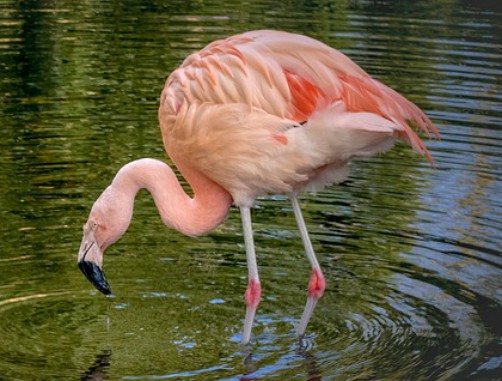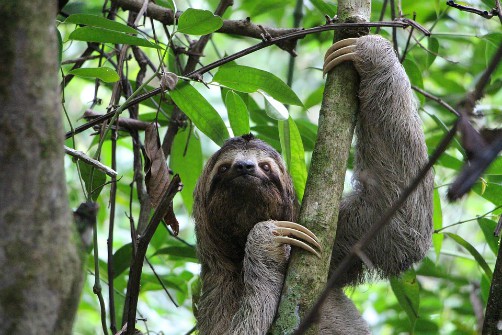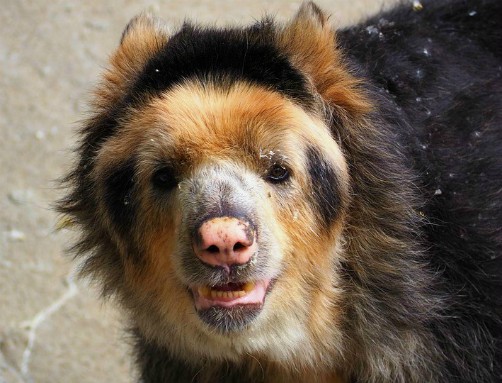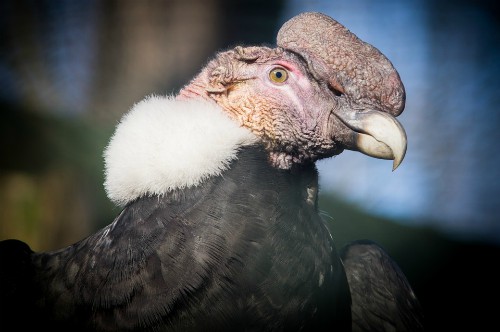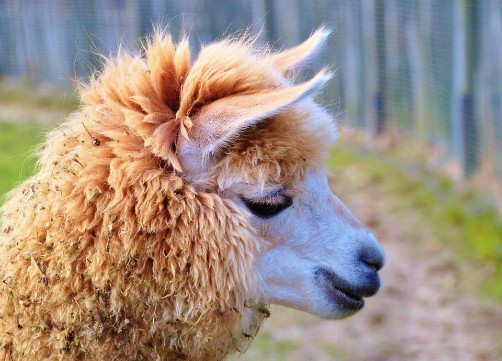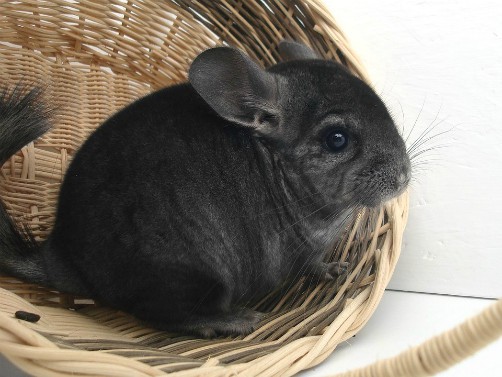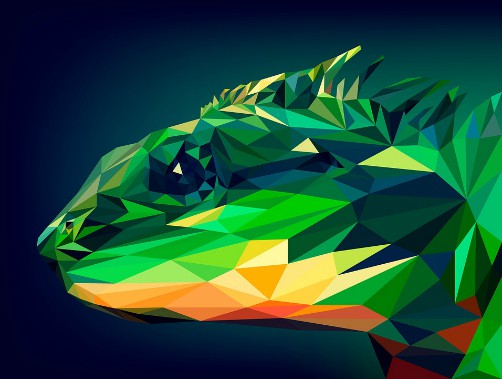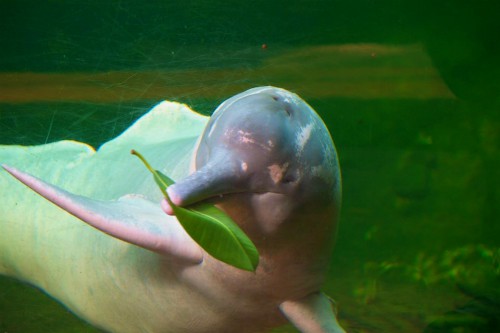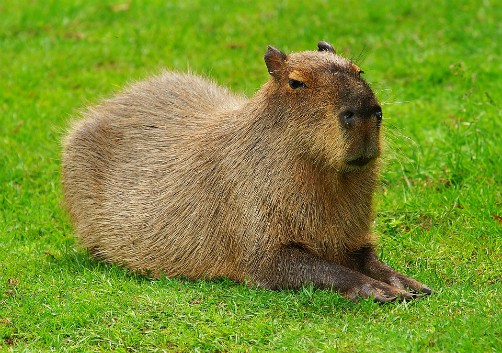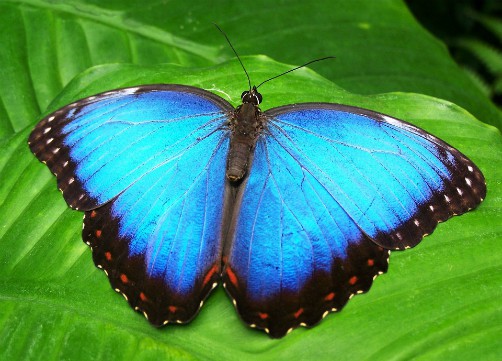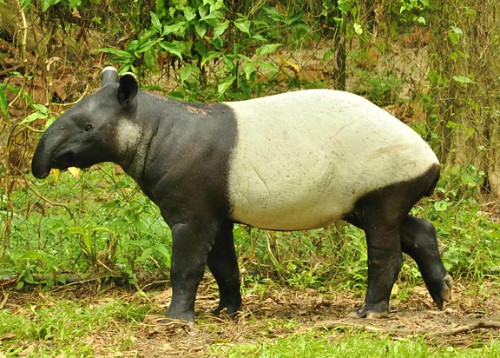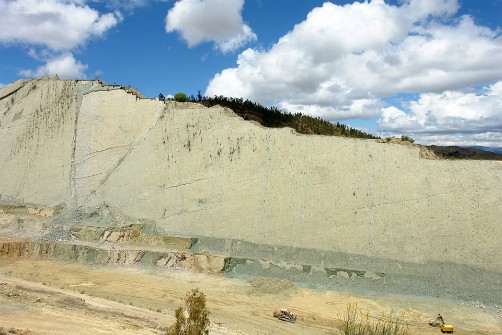|
How Fascinating is Bolivian Wildlife! This section on Bolivian wildlife trivia is fun and interesting, but I also want you to know that Bolivia is home to thousands of species of birds, animals, fish, reptiles and amphibians, many of which are disappearing at alarming rates. The worldwide scientific community has declared Eastern Bolivia one of the most biologically diverse areas on Earth. More new species are discovered here than almost anywhere else, each year. Massive efforts must be made to preserve Bolivian wildlife and habitats in view of the swift destruction of irreplaceable ecosystems for agricultural and human use. As you read these words, 2 more endangered-species just now became extinct, never to be seen or heard from again.
We can make learning about wildlife in Bolivia fun while spreading a very serious message about the importance of wildlife conservation.
Bolivian Wildlife Trivia #1: Did you know that flamingos are not born pink? Flamingos are grey. They get their pink and orange tones from the shrimp and plankton they eat. Did you know Bolivia’s flamingos are almost extinct? There is a flock of pink flamingos high on the altiplano (15,000 feet above sea level). How they got there no one knows, but when I was younger there were 77,000 of them (in 1984). More recently, the flock has dwindled to under 5000. It is estimated that this flock, unique in that it is the only one in the world to be found at such an altitude, will be completely gone within the next decade or so. Flamingos lay only one egg per year. People in the rural highland areas steal the eggs for food. But how can you ask a person who barely subsists on a day to day basis to think about flamingo conservation when that person barely has enough food to survive? In addition, flamingos are killed for their wings which are used to adorn the costumes worn during Carnival in Oruro! Now that could be stopped!
Bolivian Wildlife Trivia #2: What is the slowest animal on Earth doing in Bolivia? Hanging upside down from tree branches, mostly. Sloths are the slowest animal, so slow in fact, that in tropical areas like
Santa Cruz
mold often grows on their fur. There are two-toed sloths and three-toed sloths. They have very long, sharp curved claws. People found it entertaining to watch them make their way through the trees of the Santa Cruz
central plaza
but they had to be careful about getting too close! Those claws are slow, but deadly. The sloths in the plaza have been moved to a safer location. People used to pick them up, tease them, and feed them all the wrong kinds of foods. Being in the city is actually not good for them! Sloths (scientifically categorized as being of the Pilosa family) are related to anteaters and tamanduas. Suh-prise!
Bolivian Wildlife Trivia #3: Can you name all the bear species in South America? Easy! There is only one! The spectacled bear is the only bear species found on the entire South American continent. It is called a spectacled bear because some members of this species have white rings of fur around their eyes (the rest of the body is blackish) which look like glasses (spectacles). Many spectacled bears, however, have markings on their snouts or have no markings on their faces at all. The species is Tremarctos ornatus. Because they live primarily in warm climates, spectacled bears do not hibernate. There are only about 15,000 of them left in the world and they have been declared an Endangered Species.
Bolivian Wildlife Trivia #4: What is the largest flying bird in the world? The Andean condor. It has a wingspan that can reach 3 meters across – that’s 9 feet! Did you know condors are a type of vulture? Or that they are the Bolivian national bird? The following information is credited to the Cleveland Metroparks Zoo: “Considered to be the largest flying bird in the world, the Andean Condor is seen as a symbol of power and health, with their skins commanding prices as high as $25 apiece. Often times, certain animal species - even endangered ones - are hunted due to false beliefs that their meat or organs offer male virility or some type of cure for physical ailments and diseases in humans. It is a common belief by many villagers that the condor’s bones and organs offer many medicinal powers. Even though these beliefs are false, and grounded not in reality, but rather ignorance, the hunting practices threatening the condors existence is very real. Their ground bones are believed to alleviate rheumatism. Many natives eat the stomach of the Andean Condor because they believe it cures breast cancer. The eyes of the Condor are often roasted and eaten to sharpen one's sight, and their feathers are often placed under sleeping blankets to ward off nightmares.”
Bolivian Wildlife Trivia #5: What do llamas, alpacas and camels have in common? They’re cousins! Llamas, alpacas and camels are both from the camelid family, as are the other two types of camelids found in Bolivia: the vicuña and the guanaco. Just like camels, they spit when they get mad! Did you know alpaca fur is so fine and soft that scientifically it has been classified not as a fur, but as a fiber? It is lighter and softer than cashmere, yet 4 times warmer when woven into clothing. Did you know that the vicuña and guanaco (whose fur is also luxuriously soft) are in danger of extinction? Read more about
llamas and alpacas.
Bolivian Wildlife Trivia #6: Which Bolivian animal has the finest fur in the world? The chinchilla. A rodent, it’s fur is considered the softest, finest, most luxurious in the world, moreso even than mink or sable. Their exceedingly soft, dense coat has more fur per square inch than any other known mammal! Their fur is so dense that even lice, fleas and other parasites are unable to live on them. This means they are in high demand from the fur industry. The Bolivian short-tailed chinchilla (Chinchilla brevicaudata) is so near extinction it is on the Critically Endangered List. (It should not be confused with the Bolivian chichilla rat (Abrocoma boliviensis) which is found only in Bolivia and is considered a "vulnerable" species.) Read more about
velvety soft chinchillas.
Bolivian Wildlife Trivia #7: What in the world is a Bolivian tree lizard? Well, nothing actually. There is no such thing as a Bolivian tree lizard. You may have heard of them if you like to watch The Simpsons on TV. Like so much else in Hollywood, they are a totally made up species. There are of course some Bolivian lizards who enjoy spending time in Bolivian trees.
Bolivian Wildlife Trivia #8: Huh?? Pink dolphins swimming in the Amazon? The
Amazon River
Dolphin, a freshwater dolphin also known as the boto and bufeo colorado, is pink in color because capillaries close to the surface of its skin give it a rosy color. Its scientific name is Inia geoffrensis (“inia” is the
Guarayo
word for dolphin). Legend has it that when someone drowns, their spirit enters the boto which later is transformed into a young man. Because of this, Amazon River dolphins are almost never hunted. Even so, this species is considered “vulnerable” (A species is vulnerable when it is not critically endangered or endangered but is facing a high risk of extinction in the wild in the medium-term future). They have a ridge on their back instead of a dorsal fin, and the vertebrae in their neck are not fused, so they can turn their heads 180 degrees! In Bolivia, these pink (often grey and sometimes albino) dolphins can be found in the Madeira, Mamoré and Iténez Rivers. Their brain capacity is 40% greater than that of humans! Read about the pink river dolphin tour in Beni. And guess what! A new species of river dolphin, native to Bolivia, was recently confirmed. Photo: By Michelle Bender - https://www.flickr.com/photos/-mbender/5354172843/, CC BY-SA 2.0, https://commons.wikimedia.org/w/index.php?curid=19391061
Bolivian Wildlife Trivia #9: What is the largest rodent in the world? The capybara, also known in Bolivia as the carpincho, is the world's largest rodent. It is actually related to some of the smaller rodents: chincillas and guinea pigs! Carpinchos can weigh over 100 pounds! Their teeth, like those of the beaver, never stop growing. They have slightly webbed feet and love the water. They are so aquatic, in fact, that they often sleep in the water with just the tips of their snouts sticking out. They are considered amphibious rodents and in some places of Bolivia people consider them a fish! During lent and
Easter in Bolivia
(when Catholics do not eat meat, only fish) they eat capybara without hesitation!
Bolivian Wildlife Trivia #10: How can blue morpho butterflies protect you? One of the largest and most beautiful butterflies on Earth, the blue morpho (Morpho menelaus), has an average wingspan of 6 inches or more! It is not an endangered species and can be found throughout the Bolivian rainforest. Males are very territorial and use their bright blue wings to scare off other males. The microscopic structure of each scale on their wings causes them to shimmer with an iridescent blue color which changes when seen from different angles. Different colors have different wavelengths so the angle at which the light hits the wing and is then reflected to your eye will change the color you see. Some of their scales reflect light and some do not. This gave the financial security industry the idea to use iridescent images on paper currency and credit cards to make them difficult to counterfeit.
Bolivian Wildlife Trivia #11: Why do tapirs only have stripes when they are babies? Tapirs are born with a reddish-brown pelt, whitish stripes and rows of dots. Baby tapirs are able to walk the moment they are born, but cannot outrun predators yet, so it is believed their stripes are needed to camouflage them. They fade gradually and are usually gone by the time they are 7 months old, when they are expected to be able to escape from predators on their own. Tapirs may fall prey to anacondas and jaguars but are usually able to outrun or outswim others. The lowland tapir (Tapirus terrestris) is the most common tapir in Bolivia, needs lots of water, and is usually found in the rainforest and wetlands. However, amazingly there is a large tapir population in the Bolivian Chaco area, one of the dryest, most un-inhabitable areas of Bolivia. How any wildlife could survive with so little water is a mystery. Bolivian Wildlife Trivia #12: The wackiest wildlife in Bolivia might actually be a domesticated dog! British explorers discovered a breed of two-nosed dog in a small village called Ojaki in the Bolivian Amazon! Now that's some wacky wildlife! Here's a picture and the full story.

Bolivian Wildlife Trivia #13: Bolivia is home to the world's largest repository of dinosaur footprints. You can see them if you visit e Cal Orck’o dinosaur park, just 20 minutes from Bolivia’s capital city of Sucre. This area was declared a UNESCO site but the rock quarry where they were found belongs to a cement factory (whose workers found the tracks in 1994) and it is right next to the site. That is making conservation of this area difficult. There are more than 5000 tracks, made by up to 150 dinosaurs and they are estimated to be nearly 70-million years old, from the Cretaceous era. They were made by both carnivores and herbivores and the largest prints are more than three feet in length. All of the footprints go straight up this vertical rock wall. Click the panda for more Bolivian wildlife trivia.     |
